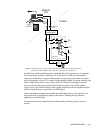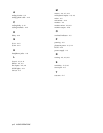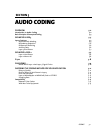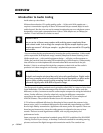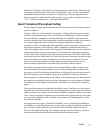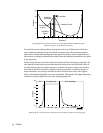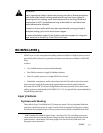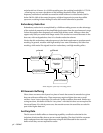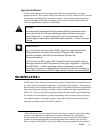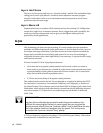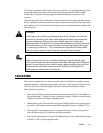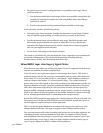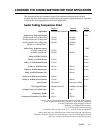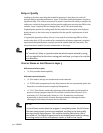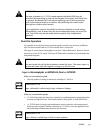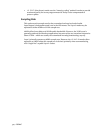
CODING 5-7
Layer 3 Joint Stereo
A joint stereo mode permits advantage to be taken from the redundancy in stereo
program material. The encoder switches from discrete L/R to a matrixed L+R/L-R mode
dynamically, depending upon the program content. The matrixed mode of operation
takes of advantage of the usual redundancy of the “center” channel information and
therefore significantly improves overall fidelity.
w
WARNING!
Joint stereo takes advantage of the way sounds distribute themselves over a
normal stereo field. If you’re transmitting two signals that don’t comprise a
normal stereo field — as would be the case if you’re transmitting an MS
matrixed signal or two totally independent audio channels —it won’t save you
anything.
?
CURIOSITY NOTE!
Layer 3 is the direct successor to the “ASPEC” algorithm, which was based on
coding methods by Fraunhofer/University of Erlangen, AT&T, Thomson
Consumer Electronics, and CNET (Centre National d’Edudes des
Télécommunications).
In the first tests for ISO in 1990, ASPEC showed the best sound quality, with an
advantage at lower bit rates. The precursor to the Layer 2 algorithm — originally
called MUSICAM
1
— had the advantage of lower complexity and simpler
processing. L3 came from a merging of both systems: For easier transcoding, L3
adopted the L2 filterbank for the first stage, and the bitstream rate was adjusted.
ISO/MPEG LAYER 2
MPEG Layer 2 is the world’s most popular perceptual coding method, primarily because
it’s easier and less expensive to implement — particularly at the encoder — and practical
devices using it were available earlier than Layer 3. It’s a preferred choice for applications
where very large data capacity is available, such as satellite links, high-capacity Primary
ISDN or T1 circuits, and hard disk storage systems using Ethernet for signal distribution.
We include it in ZephyrExpress to offer compatibility with the widest variety of codecs.
Our implementation is the highest quality, using DSP code licensed directly from the
algorithm’s primary inventor: the IRT in Munich.
1
While “Musicam” was the original European developer’s name for a particular coding
process, it was subsequently registered as a product trademark by a US company...
forcing world-wide users to drop the name and use “Layer 2” instead. That company’s
products and the internationally-accepted algorithm have nothing to do with each
other, except that ISO/MPEG Layer 2 is one of the processes supported by the products.



